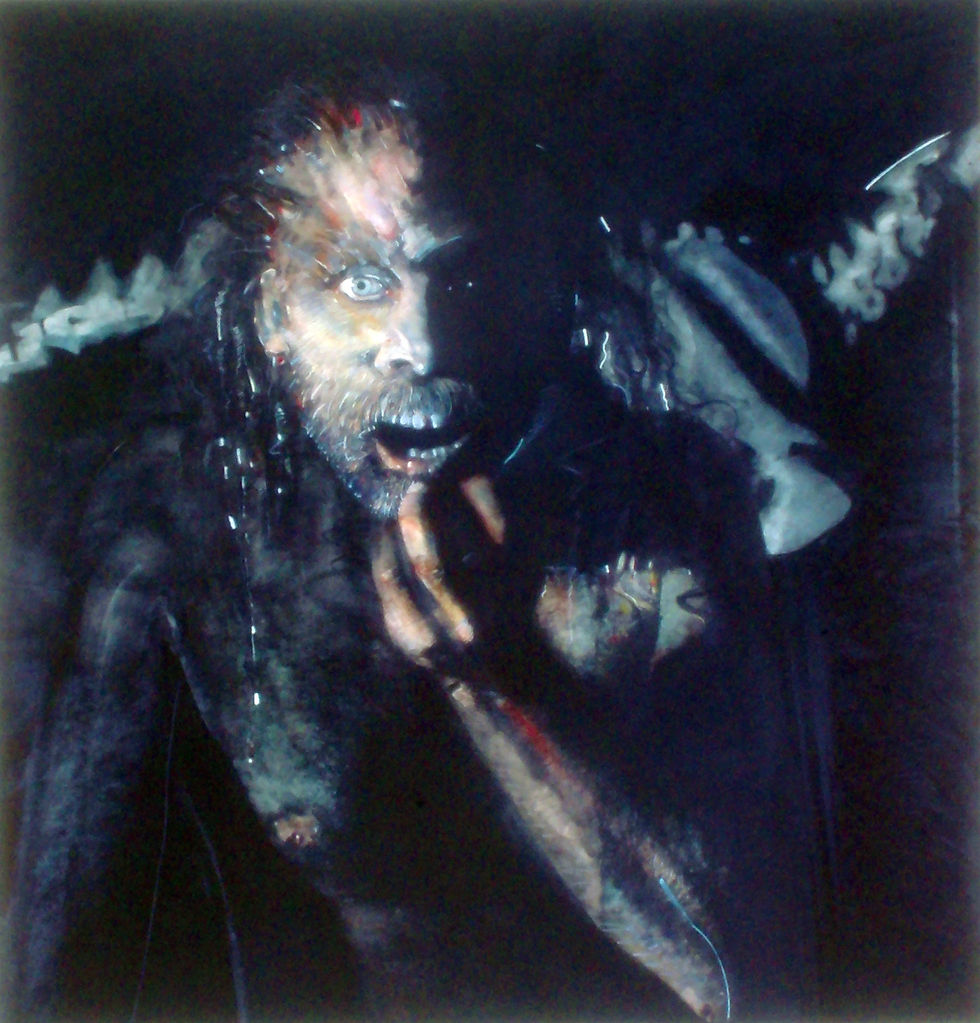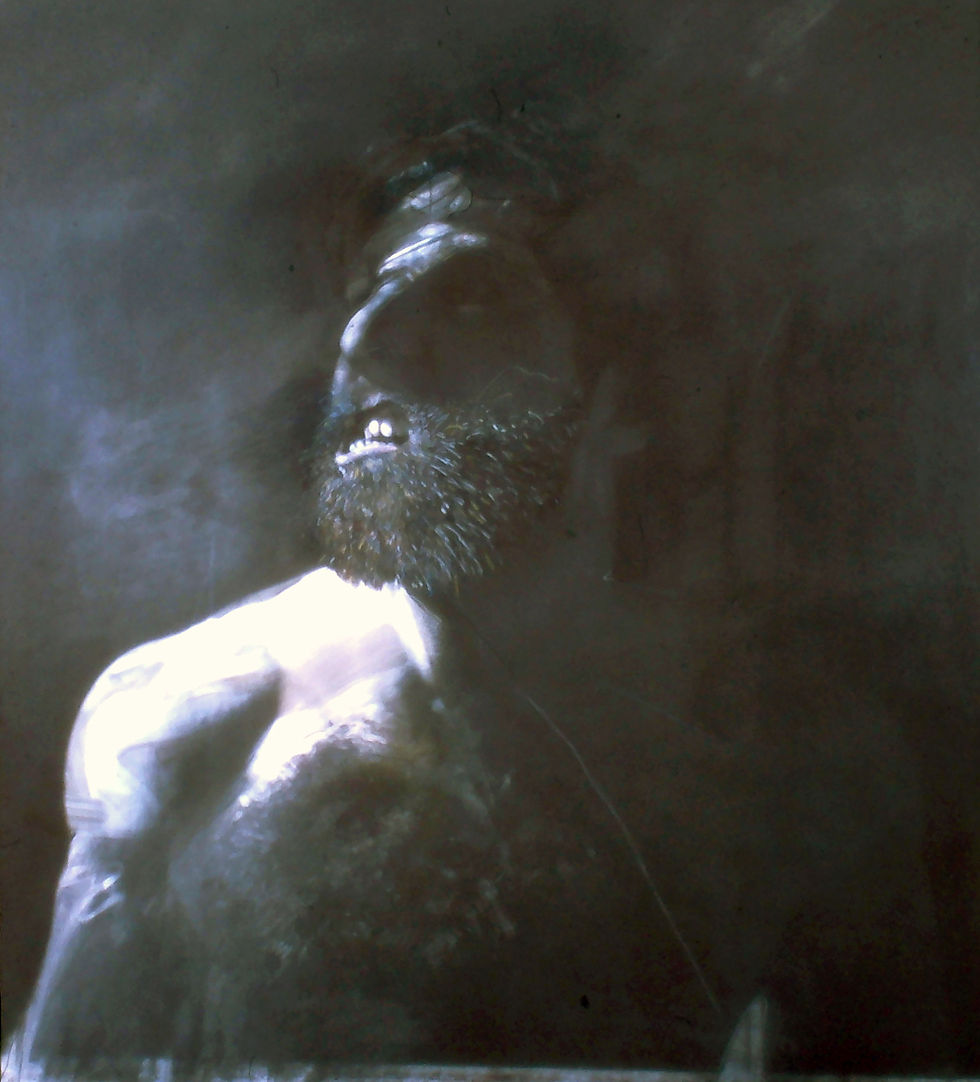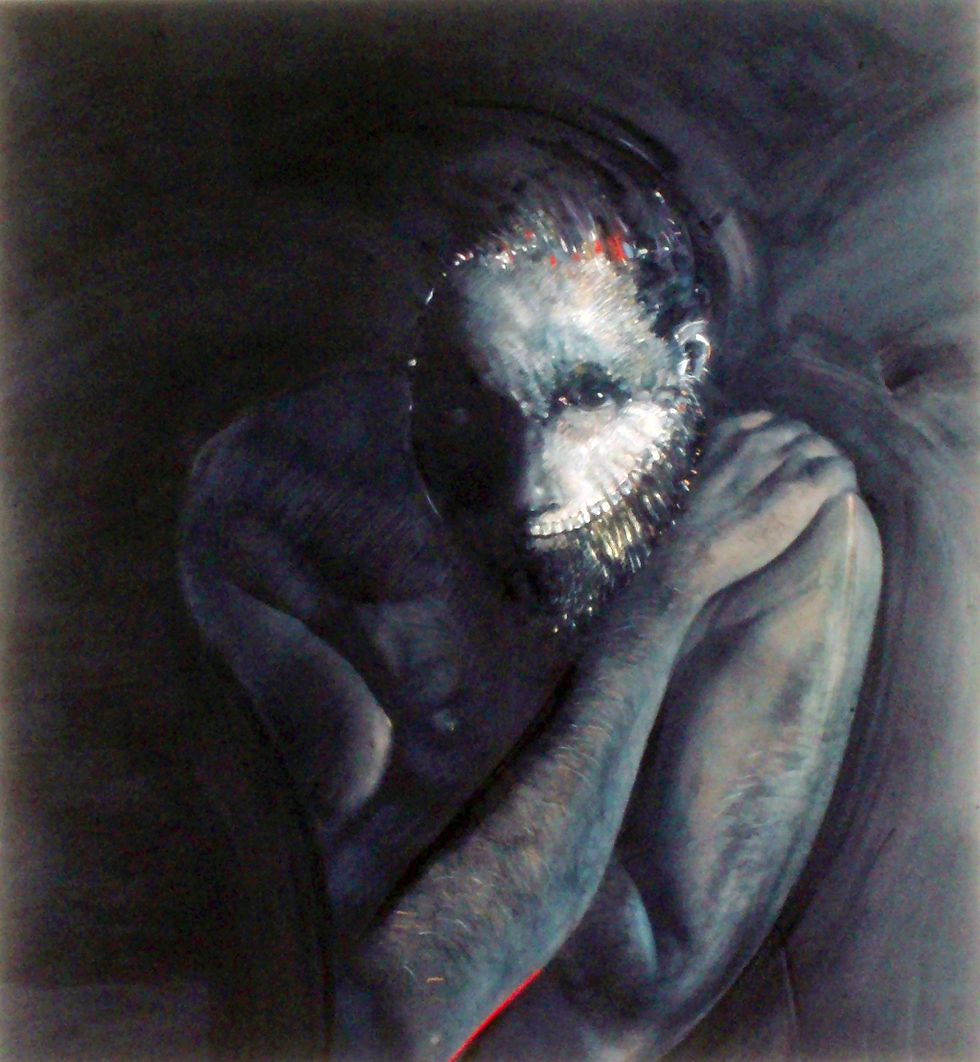William E. Parker
Der Wilde Mann Series: 1985-1987

Hand-colored black and white silver print, 44"h x 40"w.

Hand-colored black and white silver print, 44"h x 40"w.

Hand-colored black and white silver print, 44"h x 40"w.

Hand-colored black and white silver print, 44"h x 40"w.
(Double click on the image to view the gallery without interference of arrows and captions)
Hand colored with oil-emulsion, aquamedia, wax crayon, and graphite, the images in the Der WildeMann series, like those in Tattoo/Stigmata, are singular and non-repeatable. By contrast, Der Wilde Mann’s black and white silver prints are grand scale, often measuring four or more feet high and wide, six feet square framed. Dramatic, brooding, exuberant, and often ominous, they command their space. As Andy Grundberg, cultural critic for the New York Times, stated in his review of Parker’s one-person exhibition of these portraits at the Laurence Miller Gallery in New York City in fall 1988, these are not characters one wants to run into in a dark alley. Influenced by the visual and narrative iconography of the “wild man” or “man of the woods” from folklore (reintroduced into popular consciousness by Robert Bly in his 1990 book, Iron Hans: A Book about Men, the portraits in this series draw substantially from my father’s research on the temperaments or humors posited by ancient Greek and Roman physicians and philosophers, particularly Alcmaeon of Croton (c. 540–500 BC), Empedocles (c. 492–432 BC), and Hippocrates (c. 460 – c. 370 BC).
The humors derived theoretically from the notion of a preponderance of certain human bodily fluids in each individual. The four humors were sometimes combined, perhaps to gain nuance, and associated with other quaternities, such as the four seasons and four elements. Thus we have the choleric (yellow bile, summer, fire); the melancholic (black bile, autumn, earth), the sanguine (blood, spring, air); and the phlegmatic (phlegm, winter, water). In general, the humors were considered determinative of human behavioral and physical conditions. While this system, as a medical model, was discredited from the seventeenth century onward, Parker was aware of its enduring symbolic resonance, especially its power to shape the representation of extreme emotional states. To the original four humors Parker added his own, including the demoniacal, the contemplative, and the defiant. Interestingly, in his 1988 conversations with Jeffrey Hoone, Parker pointed out that the four humors were also associated “in premodern periods with ritualistic and sacred psychic states.” Parker clarified his iconographic use of the humors or temperaments as a project to sacralize the archetypal male.
Expanding on this idea, Parker stated that his wild man portraits were influenced by the thought of Romanian philosopher and historian of religions, Mircea Eliade, particularly his treatise The Sacred and the Profane (1917). There, Eliade argues that “’it is enough to observe that desacralization pervades the entire experience of the nonreligious man of modern societies and that, in consequence, he finds it increasingly difficult to rediscover the existential dimensions of religious man in the archaic societies.’Following Eliade’s thesis, [in] each of the Der Wilde Mann portraits heads, [Parker] attempts to bring to renascence a homo religiosus defined through a temperament ‘spoken’ visually by the masculine persona” (Jeffrey Hoone, “William E. Parker: Recent Work, April 1–30, 1988” [Robert Menschell Photography Gallery, Syracuse, NY, 1988]).
—Catherine-Nevil Parker